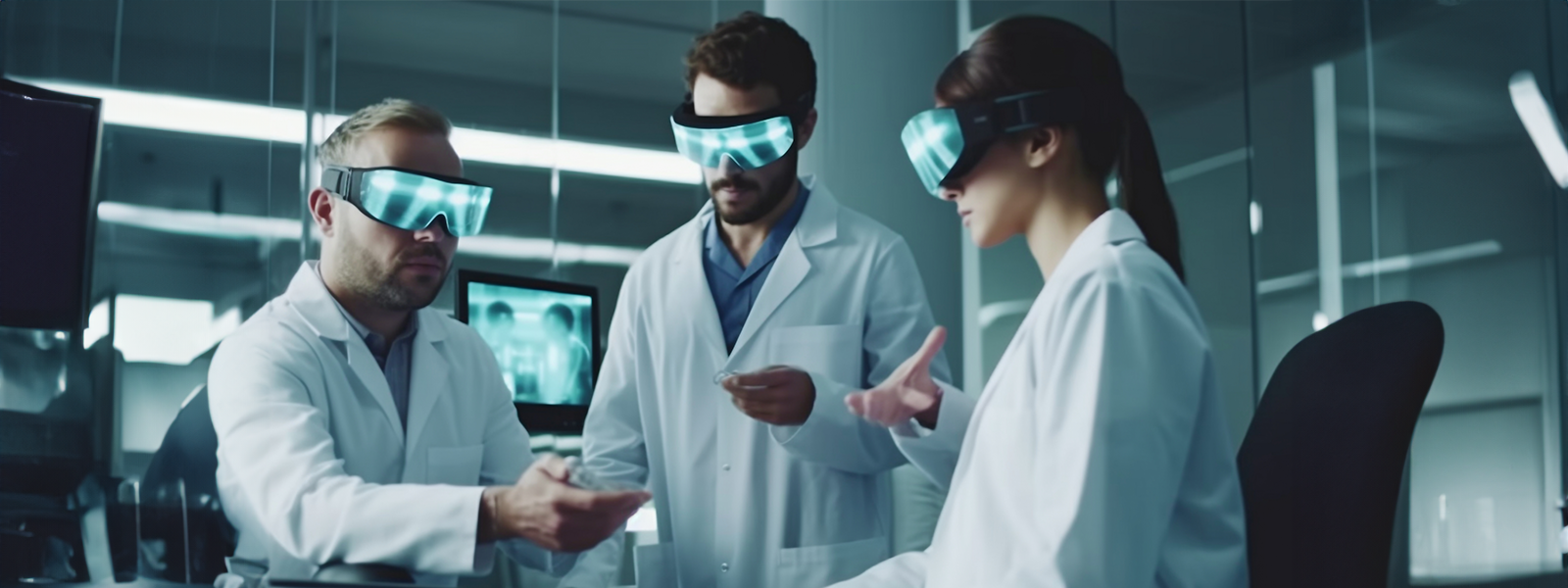AI is revolutionizing Digital Twin technology, enhancing data collection and integration across industries. This empowers real-time insights, predictive analytics, and automated responses. Explore how AI advancements like Generative AI and cognitive computing are redefining virtual representations, paving the way for a transformative future in manufacturing, healthcare, and beyond.
The emergence of Digital Twin technology has caught the attention of industries worldwide. Initially conceptualized as virtual replicas of physical assets, Digital Twins have evolved into powerful tools with real-world applications across various sectors. At the heart of this transformation lies the integration of Artificial Intelligence (AI), which is driving unprecedented insights and efficiencies. Digital Twins serve as digital counterparts of physical entities, processes, or systems, providing a virtual representation that mirrors their real-world counterparts. With the help of AI-driven insights, these Digital Twins can collect, analyze, and interpret vast amounts of data from sensors and devices in real-time. This data integration enables businesses to gain valuable insights into the performance and behavior of their assets, optimizing operations and decision-making processes. A McKinsey report estimates that by 2030, the value generated by AI in manufacturing could reach up to $3.7 trillion globally.
One of the key applications of Digital Twins is in industrial automation, where they play a vital role in optimizing manufacturing processes and enhancing productivity. By leveraging AI-enhanced Digital Twins, businesses can monitor and control various aspects of production, identify inefficiencies, and implement predictive maintenance strategies. This proactive approach minimizes downtime, reduces costs, and ensures optimal performance across the production line. Furthermore, the integration of Digital Twins with Internet of Things (IoT) devices opens new possibilities for businesses. By harnessing the power of IoT integration, Digital Twins can access real-time data from a multitude of sources, enabling comprehensive monitoring and analysis. This seamless integration enhances the accuracy and effectiveness of AI-driven insights, empowering businesses to make informed decisions and drive innovation.
Demystifying the Digital Twin
A Digital Twin is essentially a virtual representation of a physical entity, system, or process. It's like having a mirror image in the digital world, created by collecting real-time data from sensors, devices, and other sources. This digital counterpart enables businesses to gain valuable insights and optimize performance. For example, in industrial automation, Digital Twins play a crucial role in monitoring and controlling manufacturing processes. By integrating AI-driven insights, businesses can identify inefficiencies and implement predictive maintenance strategies, leading to increased productivity and cost savings.
IoT integration further enhances the capabilities of Digital Twins by providing a continuous stream of real-time data. This comprehensive data access allows businesses to monitor and analyze various aspects of their operations, from supply chain management to customer engagement. The implementation of Digital Twin solutions has vast applications across industries. In healthcare, for instance, Digital Twins can simulate patient behavior and treatment plans, enabling healthcare providers to make more informed decisions and improve patient outcomes. Similarly, in energy and environmental monitoring, Digital Twins optimizes energy production and predicts equipment failures, contributing to sustainability efforts. A study published by Frost & Sullivan suggests that the global digital twin market in healthcare could reach $5.4 billion by 2025.
Overall, Digital Twin technology represents a significant advancement in the digital transformation journey of businesses. By leveraging AI-driven insights and IoT integration, businesses can unlock new opportunities for optimization, innovation, and growth. The implementation of Digital Twins is not just a trend but a strategic imperative for businesses looking to stay competitive in today's digital age.
The Synergy of AI and Digital Twins
In the current landscape, AI is the catalyst propelling Digital Twins into a new ecosystem of efficiency and innovation. AI algorithms augment the data collection and integration processes of Digital Twins, unlocking a plethora of possibilities across industries. By leveraging AI-driven insights, businesses can optimize physical systems, drive predictive analytics, and automate decision-making processes.
AI-driven sensor technologies play a pivotal role in enhancing the capabilities of Digital Twins. These sensors, ranging from IoT devices to computer vision cameras, collect vast amounts of real-time data from the physical world. Through sophisticated AI algorithms, this data is meticulously analyzed, filtered, and processed, enriching the Digital Twin's understanding of its physical counterpart. For instance, in smart city applications, AI enables Digital Twins to analyze data from traffic cameras, weather stations, and social media feeds in real-time, optimizing traffic flow and urban planning.
IoT integration further enhances the accuracy and dynamism of Digital Twins by providing a continuous stream of data from various sensors. These sensors capture a myriad of parameters such as temperature, humidity, motion, and more, ensuring the fidelity of the virtual representation.
Revolutionizing Predictive Analytics
The integration of AI-enhanced Digital Twins with predictive analytics offers businesses unparalleled capabilities in making informed decisions and managing risks proactively. In manufacturing, Digital Twins simulate production processes, enabling organizations to forecast the effects of different variables and optimize production plans accordingly. This predictive capability minimizes downtime, enhances efficiency, and ultimately improves the bottom line. In the healthcare sector, Digital Twins analyze patient data to personalize treatment plans and predict disease progression. By leveraging AI-driven insights, healthcare providers can offer tailored care, leading to better patient outcomes and reduced healthcare costs. Additionally, Digital Twins facilitates medical diagnosis by simulating various scenarios and recommending the most effective treatment options based on real-time data analysis.
Overall, the combination of AI-enhanced Digital Twins and predictive analytics is reshaping industries by enabling proactive decision-making and risk mitigation. Businesses across sectors can harness this powerful technology to optimize operations, enhance productivity, and drive innovation. As organizations continue to embrace digital transformation, the integration of Digital Twin solutions with predictive analytics will play a pivotal role in shaping the future of business.
Enhancing Safety and Control Systems
The convergence of AI-driven control systems with Digital Twins is revolutionizing industries by providing real-time insights, predictive capabilities, and automated responses. Particularly in safety-critical settings like hospitals, these systems play a pivotal role in monitoring safety parameters in real-time. By leveraging AI-driven insights, control systems can swiftly initiate preventive measures when necessary, safeguarding the well-being of both patients and staff.
In hospitals, where safety is paramount, the integration of AI-driven control systems with Digital Twins enhances efficiency and responsiveness. By continuously monitoring critical parameters, such as patient vital signs and equipment status, these systems can detect potential risks or anomalies in real-time. In an emergency or abnormal situation, AI algorithms enable control systems to automatically trigger preventive measures, such as adjusting equipment settings or alerting medical personnel.
This seamless integration of AI-driven control systems and Digital Twins not only enhances safety but also improves operational efficiency. By automating routine tasks and responses, hospitals can optimize resource allocation and streamline workflow processes. Additionally, the ability to predict and preempt potential safety hazards enables hospitals to maintain high standards of patient care while minimizing risks and disruptions.
Advancements in AI-Powered Digital Twins
The evolution of AI-driven modeling and simulation techniques further augments the capabilities of Digital Twins across various disciplines. Techniques such as Natural Language Processing (NLP) and Generative Adversarial Networks (GANs) enhance the realism and sophistication of virtual simulations, providing unparalleled insights and training opportunities.
Cognitive Digital Twins represent the pinnacle of digital twin technology, incorporating AI-driven cognitive computing capabilities. These twins not only replicate the physical properties and behaviors of their real-world counterparts but also possess cognitive capabilities to understand, reason, and make decisions based on the data they collect. In smart cities, Cognitive Digital Twins are utilized to simulate and optimize various aspects of urban life, from traffic control to energy usage, paving the way for sustainable urban development.
Challenges and Considerations
While the potential of AI-enhanced Digital Twins is immense, it's essential to address challenges related to data security, legacy system integration, scalability, and ethical considerations. Robust cybersecurity measures must be implemented to safeguard sensitive data used in Digital Twins, ensuring protection against data breaches and unauthorized access. Legacy systems may pose compatibility issues, necessitating thorough assessments and middleware solutions to facilitate integration. Scalability concerns must be addressed to accommodate growing data volumes and evolving Digital Twin requirements. Additionally, ethical AI principles such as fairness, accountability, and transparency must guide the development and use of Digital Twins, ensuring equitable outcomes and compliance with regulations.
Conclusion
Looking ahead, the future of AI-enhanced Digital Twins holds immense promise, fueled by cutting-edge advancements in AI technologies. The integration of Generative AI models and quantum computing will further enhance the accuracy and sophistication of Digital Twins, unlocking new realms of innovation and optimization across industries. AI-enhanced Digital Twins are revolutionizing industries by optimizing physical systems, driving predictive analytics, and automating decision-making processes. By leveraging AI-driven insights, businesses can unlock unprecedented efficiency, innovation, and resilience. As we embrace the transformative potential of AI-enhanced Digital Twins in 2024 and beyond, it's imperative to address challenges and considerations while harnessing the immense opportunities for growth and progress.





